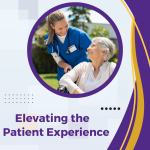By Robin Williams Adams Your Health correspondent
The Ledger June 3, 2019
A few years ago, there were reports of fibromyalgia being overlooked, with patients told the pain was in their minds or attributed to other conditions.
Now that the disease is better known, there’s concern the reverse may be happening too.
Fifteen percent of his patients have fibromyalgia, said Dr. Mohammad Eldeeb, a pain management specialist in Winter Haven, but more than half come to him thinking they have it.
“I am not saying they don’t have pain, but that there’s another legitimate cause,” said Eldeeb, who is with Bond Clinic.
Recent studies raise similar concerns about incorrect diagnoses, including “The Problematic Nature of Fibromyalgia Diagnosis in the Community.”
Surveying 3,276 primary care patients, the authors found a disconnect between criteria for fibromyalgia and doctors’ diagnoses of it.
Just under one-third diagnosed by a doctor as having fibromyalgia met the 2016 criteria, they said, and “only 35.4%” meeting the criteria had a doctor’s diagnosis for fibromyalgia.
That article published in March in ACR Open Rheumatology.
It illustrates the ongoing nature of physicians’ struggle to precisely define a condition for which treatments exist but no cure.
He said the American College of Rheumatology revised its diagnostic guidelines in 2010 to make them more practical to use in diagnosing the condition.
Fibromyalgia is a common neurologic health problem (involving the nervous system) that causes widespread pain and tenderness or sensitivity to touch, according to the ACR website. It affects more women than men.
“It’s a type of pain you can’t really describe,” said Lakeland’s Rosie Oxford, 62, who developed fibromyalgia in her early 50s.
“It’s like a toothache or leg cramps in your whole body.”
Patients can look up fibromyalgia on medical websites and in literature to become familiar with symptoms, Tallo said, letting them relate better to their physician during the initial exam.
Points of agreement
• The pain is intense and frequently exhausting, with disrupted, nonrestorative sleep a potent factor.
• Medications alone often aren’t enough to treat it, so patients are encouraged to try various complementary, non-drug therapies like aerobic exercise and tai chi.
• More research and medications are needed.
Its “burning, aching pain” stems from interference with nerves and bands of muscles and connective tissue, Eldeeb said.
Muscle pain and 11 or more tender points in certain areas are a crucial part of meeting medical criteria for fibromyalgia, Eldeeb said.
If there are fewer points, it’s likely to be myofascial pain, a chronic, painful condition affecting connective tissue that cover the muscles (fascia).
Eldeeb said treatment for those conditions is basically the same.
That’s not necessarily the case with other diseases or conditions whose symptoms mimic those of fibromyalgia. Among them, the doctors said, are rheumatoid arthritis, lupus, hypothyroidism (underactive thyroid gland), Sjogren’s syndrome and other thyroid and neurologic disorders.
Various inflammatory conditions, among them polymyalgia rheumatica, do the same. Polymyalgia is believed to be a disease in which the body’s immune system attacks connective tissues.
Fibromyalgia isn’t considered an autoimmune or an inflammation-based disease.
Depression and other co-occurring medical conditions also can simulate or worsen fibromyalgia, Tallo said.
All of which make ruling out other conditions necessary before a conclusive fibromyalgia diagnosis.
Both doctors encourage fibromyalgia patients to use a comprehensive approach, not limited to medicine.
Patient education, stress reduction programs, lifestyle adaptation, good sleep hygiene, aerobic exercise and cognitive behavioral therapy are ways to help manage fibromyalgia, Tallo said.
“Yoga helps,” Eldeeb said. “Tai chi helps. Deep tissue massage helps.”
Research shows physical exercise is effective in managing fibromyalgia, in addition to medicines.
“If I didn’t exercise, I’d be curled up in a little ball,” said Oxford, who teaches a stretching/aerobic exercise class at Kelly Recreation Center.
Frankie Hart, who teaches yoga and tai chi in Lakeland, said she’s had fibromyalgia patients attend either or both classes.
“When we are in these relaxed states, we literally feel better.″
In addition to relaxation, she said, tai chi and yoga strengthen the body.
Trigger point injection is another method of treatment, one Eldeeb suggests is best done before the long-term commitment to medication. This involves injections to relieve pain and stiffness in specific areas of the muscles.
Three drugs, some of which Oxford takes, have Food and Drug Administration approval for treating fibromyalgia.
Duloxetine (Cymbalta) and milnacipran (Savella) change brain chemicals that help control pain levels, according to the rheumatology college. Pregabalin (Lyrica) also is approved. It blocks overactivity in nerve cells that transmit pain.
Doctors also use some medications approved for other conditions to treat fibromyalgia off label.
“An ideal agent would be one that helps with pain, sleep problems and fatigue,″ he said, adding, “Various drugs currently undergoing testing thus far have shown limited promise and efficacy appears to be similar to what we see with currently available agents.”
Opioid narcotics aren’t recommended for treatment, Eldeeb said. Their extended use can cause greater sensitivity to pain.
Over-the-counter medicines like acetaminophen, ibuprofen and naproxen aren’t effective for fibromyalgia, but can help with other causes of pain like arthritis.
Researchers are looking into many different drug types.
Some at the University of Texas Medical Branch at Galveston announced in May they were able to “dramatically reduce” fibromyalgia patients’ pain by adding metformin, a drug targeting insulin resistance, to their current medications.
Results are very preliminary, but each prospect of new pain relief raises hope.
Robin Williams Adams can be reached at [email protected].
 Treating you well since 1948
Treating you well since 1948 


